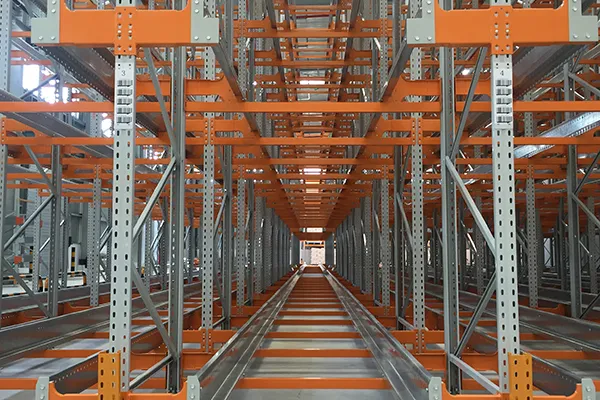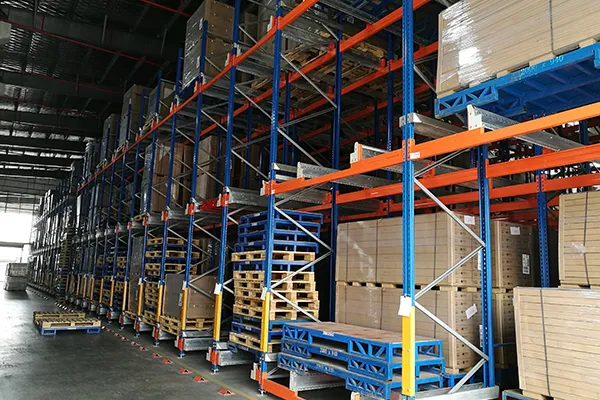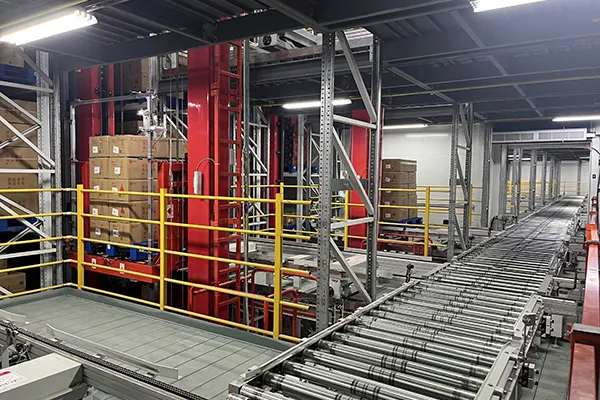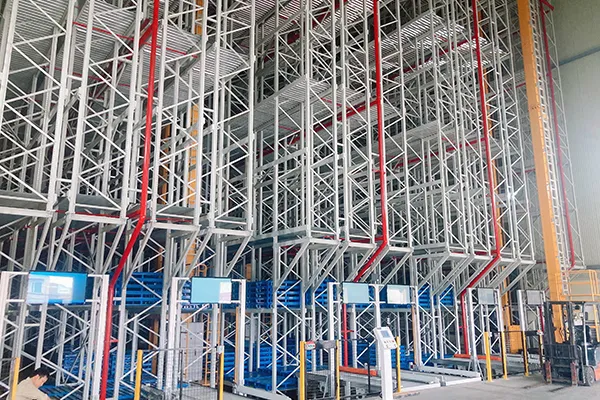Introduction to Rail Guided Vehicle System
Rail Guided Vehicle System represents a cutting-edge automation solution that is transforming material handling processes across various industries. As a pivotal component of modern smart factories and logistics hubs, RGV systems offer unparalleled efficiency, precision, and reliability. This article delves into the intricacies of RGV technology, exploring its definition, structural characteristics, classifications, functionalities, advantages, and diverse applications. By understanding these aspects, businesses can harness the power of RGV to optimize operations, reduce costs, and enhance productivity in an increasingly competitive global market. The rise of Industry 4.0 and the Internet of Things (IoT) has further propelled the adoption of Rail Guided Vehicle Systems, making them indispensable in the quest for sustainable and intelligent manufacturing.

Defining Rail Guided Vehicle System
A Rail Guided Vehicle System, commonly abbreviated as RGV, is an automated guided vehicle that operates on a fixed track or rail network. Unlike traditional manual handling methods, RGV systems are designed to transport materials, components, or products within a controlled environment, such as warehouses, production lines, or distribution centers. These systems are typically integrated with computer-controlled mechanisms, allowing for seamless navigation and coordination. The core principle of an RGV involves using predefined paths to ensure accurate movement, minimizing human intervention and maximizing operational consistency. In essence, Rail Guided Vehicle Systems serve as the backbone of automated material flow, enabling high-speed transfers and reducing the risk of errors in complex industrial settings.
Structural Characteristics of RGV
The architecture of a Rail Guided Vehicle System is engineered for durability, flexibility, and high performance. Key structural elements include:
- Chassis and Frame: Built from robust materials like steel or aluminum, the chassis provides stability and support for heavy loads, often ranging from a few kilograms to several tons. It is designed to withstand continuous operation in harsh environments.
- Guidance Mechanism: RGV systems employ optical, magnetic, or laser-based sensors to follow the rail path precisely. This ensures smooth traversal along straight sections, curves, and intersections without deviation.
- Propulsion System: Typically powered by electric motors or hybrid engines, the propulsion unit drives the vehicle along the rails. Many modern RGVs incorporate regenerative braking to enhance energy efficiency.
- Control Unit: An onboard computerized control system, often linked to a central management platform, processes real-time data for route optimization, collision avoidance, and task scheduling. This unit may include PLCs (Programmable Logic Controllers) or IoT interfaces for remote monitoring.
- Load Handling Attachments: Depending on the application, RGVs can be equipped with custom attachments such as forks, conveyors, or robotic arms to facilitate loading and unloading operations.
- Safety Features: Integrated sensors, emergency stop buttons, and obstacle detection systems ensure operator safety and prevent accidents, aligning with international standards like ISO 13849.
This modular design allows Rail Guided Vehicle Systems to be customized for specific needs, ensuring scalability and adaptability in dynamic industrial landscapes.
Classifications of RGV Systems
Rail Guided Vehicle Systems can be categorized based on various criteria, reflecting their versatility and application-specific designs. Common classifications include:
- By Guidance Technology:
- Magnetic Guidance: Uses magnetic strips embedded in the floor for path following, ideal for environments requiring high precision.
- Optical Guidance: Relies on visual markers or lines, offering flexibility in path modifications.
- Laser Guidance: Employs laser scanners for navigation, suitable for complex layouts with dynamic obstacles.
- By Load Capacity:
- Light-Duty RGV: Handles loads up to 500 kg, often used in electronics assembly or pharmaceutical industries.
- Medium-Duty RGV: Manages weights between 500 kg and 2000 kg, common in automotive manufacturing.
- Heavy-Duty RGV: Supports loads exceeding 2000 kg, applied in heavy machinery or port logistics.
- By Operational Mode:
- Single-Direction RGV: Moves along a linear path for simple transfer tasks.
- Bi-Directional RGV: Capable of moving forward and backward, enhancing maneuverability in confined spaces.
- Multi-Directional RGV: Incorporates swivel mechanisms for omnidirectional movement, perfect for intricate warehouse layouts.
- By Power Source:
- Battery-Powered RGV: Offers cordless operation with rechargeable batteries, promoting energy sustainability.
- Wire-Guided RGV: Draws power from electrified rails, ensuring continuous operation in high-demand scenarios.
These classifications highlight how RGV systems can be tailored to meet diverse operational requirements, fostering efficiency across sectors.

Functions and Roles of RGV
Rail Guided Vehicle Systems perform a multitude of functions that streamline industrial processes. Primary roles include:
- Material Transportation: Automating the movement of raw materials, work-in-progress items, and finished goods between stations, reducing manual labor and cycle times.
- Storage and Retrieval: Integrating with automated storage and retrieval systems (AS/RS) to manage inventory in high-bay warehouses, ensuring accurate stock placement and retrieval.
- Assembly Line Support: Serving as mobile platforms in production lines, where they deliver components to assembly points, synchronizing with robotic arms or human workers.
- Sorting and Distribution: Facilitating high-speed sorting of parcels in logistics centers, leveraging barcode scanners or RFID technology for item tracking.
- Quality Control Assistance: Transporting products through inspection zones, enabling automated testing and data collection for quality assurance.
- Waste Handling: Managing the disposal of scrap materials in manufacturing plants, contributing to cleaner and safer workplaces.
By executing these functions, RGV systems enhance workflow continuity, minimize downtime, and support just-in-time (JIT) production methodologies, ultimately driving operational excellence.
Advantages of Implementing RGV
The adoption of Rail Guided Vehicle Systems offers numerous benefits that justify their growing popularity. Key advantages encompass:
- High Efficiency: RGV operations are characterized by rapid speed and consistent performance, leading to increased throughput and reduced processing times. For instance, in e-commerce fulfillment centers, RGVs can handle hundreds of items per hour.
- Precision and Accuracy: With advanced guidance technologies, these systems achieve millimeter-level positioning, minimizing errors in material placement and improving overall product quality.
- Cost Savings: By automating repetitive tasks, businesses can lower labor costs, decrease reliance on manual workers, and reduce expenses associated with errors and rework. Over time, the return on investment (ROI) for RGV implementations often exceeds initial outlays.
- Scalability and Flexibility: Modular designs allow for easy expansion or reconfiguration of RGV networks, accommodating changes in production volume or layout without major disruptions.
- Enhanced Safety: Automated features such as collision avoidance and emergency protocols reduce workplace accidents, ensuring compliance with occupational health regulations.
- Energy Efficiency: Many modern RGVs incorporate eco-friendly technologies like energy recovery systems, aligning with sustainability goals and reducing carbon footprints.
- Data Integration: Connectivity with IoT platforms enables real-time monitoring and predictive maintenance, preventing unexpected breakdowns and optimizing resource allocation.
These advantages make Rail Guided Vehicle Systems a smart investment for industries seeking to future-proof their operations.
Application Industries for RGV
Rail Guided Vehicle Systems find applications across a broad spectrum of industries, demonstrating their versatility and impact. Notable sectors include:
- Manufacturing: In automotive plants, RGVs transport car parts along assembly lines, while in electronics factories, they handle delicate components with care.
- Logistics and Warehousing: E-commerce giants and third-party logistics providers use RGV networks for order picking, packing, and shipping, ensuring timely deliveries.
- Pharmaceuticals: RGVs maintain sterile environments by moving medicinal products through cleanrooms, adhering to strict regulatory standards like GMP (Good Manufacturing Practice).
- Food and Beverage: In processing facilities, these systems manage perishable goods, supporting hygiene and traceability requirements.
- Aviation and Aerospace: RGVs assist in the movement of large aircraft components, enhancing precision in hangar operations.
- Retail Distribution: Supermarkets and retail chains employ RGVs for inventory management, reducing stockouts and overstock situations.
- Mining and Heavy Industry: In mining operations, heavy-duty RGVs transport ores and equipment underground, improving safety and productivity.
As industries evolve, the role of Rail Guided Vehicle Systems is expected to expand, particularly with advancements in AI and machine learning, enabling smarter, autonomous decision-making.
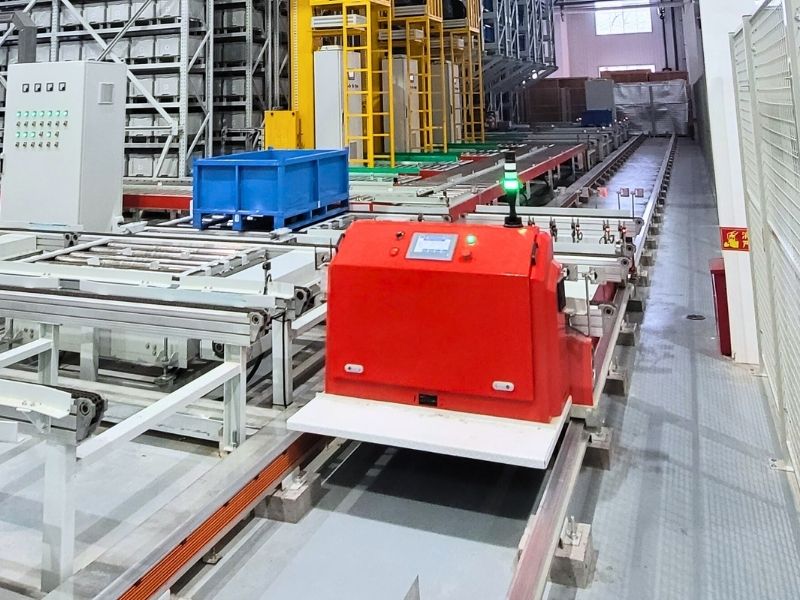
Conclusion and Future Outlook
In summary, Rail Guided Vehicle System stands as a cornerstone of modern automation, offering a blend of reliability, efficiency, and adaptability. From its robust structure to its wide-ranging applications, RGV technology empowers businesses to achieve new heights of operational excellence. Looking ahead, trends such as the integration of 5G connectivity, AI-driven optimization, and green energy solutions will further enhance RGV capabilities. Companies that embrace these innovations will be well-positioned to thrive in the era of digital transformation, making Rail Guided Vehicle Systems not just a tool, but a strategic asset for sustainable growth.


